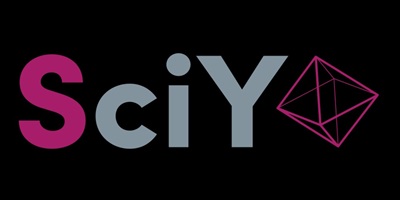In research and development (R&D), scientists are generating more data now than ever before. But finding success in today’s digital age requires the implementation of a company-wide data-centric architecture that addresses research problems from a long-term perspective.
How can we overcome current research limitations?
In today’s digital age, research limitations are the result of applying short-term solutions to long-term problems. Scientists often rely on applications that document and integrate data using approaches that are not standardized. These decisions can lead to an unnecessarily complex and inefficient application-centric architecture. While this approach may temporarily improve data security, compliance, or availability, it does not allow bench scientists to effectively perform research tasks without compromising data quality, accessibility, and reusability. Therefore, a long-term data centric approach is needed in order to not only overcome current problems but mitigate issues into the future.
Why move from an application-centric to a data-centric architecture?
Application-centric infrastructures exhibit a lack of data strategy, relying instead on applications to function as data gatekeepers. This architecture necessitates user interaction with applications as the exclusive means of data access and sharing. Consequently, data conversion processes become protracted, while multiple, often departmentally siloed data access points increase. The integration of data is rendered unnecessarily complex due to inconsistencies in format, structure, and terminology. As the application ecosystem expands, the associated costs of managing this complexity escalate significantly.
Within a data-centric architecture, data becomes a persistent asset possessing a lifespan independent of specific applications. This paradigm empowers users to access existing data repositories for multiple projects from a unified data point. Standardized formats, structures, and terminologies facilitate seamless integration of both internal and external data on a global scale. This approach optimizes resource allocation, reduces costs and accelerates time-to-market.
What are the key benefits of a data-centric architecture?
Reusability is a foundation of efficient data management. By simplifying data integration, it significantly reduces both time and costs. Automation of analytics processes becomes feasible, streamlining the analysis of large datasets. It fosters better communication between business functions by establishing a common language and data framework. Reusability also eliminates the need for application expertise, maintenance of legacy systems, or unnecessary updates, leading to reduced overhead. To facilitate reusability, assets are prepared using common ontologies and formatting standards.
Data quality is another critical aspect of a data-centric architecture. By preventing data duplication, high ownership costs and data integrity risks, it ensures the reliability and accuracy of data. Harmonization of data across both internal and external sources promotes consistency and reduces errors. High data quality provides a high total performance of ownership (TPO) to total cost of ownership (TCO) ratio. Maintaining rich data and metadata provides valuable context and supports data analysis, while a unified data governance system ensures that data is managed consistently and effectively.
Accessibility is essential for maximizing the value of data. By providing a single point of data access, it automates data identifiers and prevents inconsistencies. Rich contextual metadata enhances data understanding and usability. Accessibility also prevents data silos, ensuring that data is readily available to all authorized users. Finally, by enabling more publicly accessible data, organizations can foster collaboration, innovation, and knowledge sharing.
What are the benefits of applying FAIR data principles?
Data that is standardized using a data management platform is more likely to adhere to FAIR principles to enable data discovery and make it available for reuse. Companies involved in the pharma and biotech industries who apply FAIR principles will improve data integrity and compliance, simplify research process and accelerate R&D productivity.
FAIR data strategy implemented across the laboratory will streamline analytical insights by enabling AI and ML to be utilized. This will help to analyze data sources and provide valuable insights to guide decision-making, in turn leading to streamlined R&D processes and accelerated drug discovery pipelines.
How is regulatory compliance facilitated?
Taking a data-centric approach to data management enables a rigorous, complete data trail back to the point of invention which is crucial for regulatory compliance and for future patent applications. A platform that is vendor agnostic allows users to access testing data across all hardware and software throughout the lab, removing barriers and improving data availability.
Compliance with regulations such as US Food and Drug Administration (FDA) 21 Code of Federal Regulation (CFR) Part 11 and good laboratory practices (GLP) is also observed, so data is reliable and trustworthy when filing for an application.
How to seamlessly connect data generators and data users?
Employing a centralized, accessible and automated data management solution fully integrates the digital laboratory and provides vital insights to data generators and data users, turning data into a corporate asset. As a result, important experimental information can be found, retrieved, visualized, and reused to support any future research.
How can you ensure all data users are happy?
Many stakeholders involved in the research chain see clear benefits in a fully automated data management system, such as IT and legal for data retention and security, and data scientists for reusing data and learning. However, it is important to consider the needs of those involved in reviewing data and working on data, such as bench scientists who require the data to perform research tasks.
Many data management systems now have functionality to amend data files directly within the platform, rather than having to download data from another platform and reupload edited files, freeing up bench scientists to work on high-value research tasks.
Why choose open software platforms and solutions?
The implementation of an open data management platform facilitates accessible data, enabling both primary and secondary utilization to generate novel value across diverse applications. This approach accelerates drug discovery timelines, personalizes data strategies, and fosters industry-wide collaboration.
Enhanced findability, accessibility, and machine-readability of data translate to substantial time and cost savings for researchers, ultimately resulting in superior products, expedited timelines, and groundbreaking innovations.
Author:
 Dr. Christof Gaenzler
Dr. Christof Gaenzler
SciY
Dr. Christof Gaenzler, Director PreSales and Product Marketing
 Gary Sharman
Gary Sharman
SciY
Gary Sharman, PhD, Senior Scientific Director, SciY





















